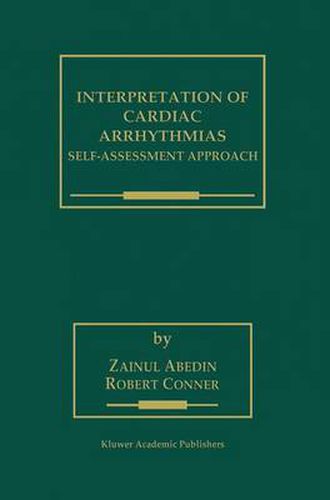Readings Newsletter
Become a Readings Member to make your shopping experience even easier.
Sign in or sign up for free!
You’re not far away from qualifying for FREE standard shipping within Australia
You’ve qualified for FREE standard shipping within Australia
The cart is loading…






This title is printed to order. This book may have been self-published. If so, we cannot guarantee the quality of the content. In the main most books will have gone through the editing process however some may not. We therefore suggest that you be aware of this before ordering this book. If in doubt check either the author or publisher’s details as we are unable to accept any returns unless they are faulty. Please contact us if you have any questions.
Accurate diagnosis of arrhythmias is the goal of this volume. Before the clinician can accurately classify the multiple permutations of cardiac rhythm encountered in daily practice, several essential preconditions must be met. At the most basic level, the clinician must know the diagnostic criteria for each rhythm. Without a clear understanding of these criteria an accurate differential diagnosis is impossible; without accurate diagnosis, correct intervention is a mere matter of chance. A second precondition of accurate rhythm diagnosis is an understanding of the mechanism of arrhythmias. Not uncommonly, two or more arrhythmic mechanisms coexist, confronting the clinician with a baffling mixture of apparently unrelated complexes and intervals. Without an understanding of the various arrhythmic mechanisms, simple and complex, the tangled skein of data can never be unravelled. Finally accurate arrhythmia diagnosis depends on skill attained through practice. The competent electrocardiographer combines the skills of precise measurement and rational application of logic with broad theoretical knowledge. The pleasure of electrocardiography is seeing through the surface appearance to the inner workings. The text presupposes no prior knowledge of arrhythmias, and progresses from basic to the complex. The didactic sections focus extensively on the mechanism of arrhythmia, using laddergrams and other diagramatic devices to help the student visualize what is happening with the cardiac conduction system. Extensive self-assessment sections enable students to apply critical skills and test their grasp of the diagnostic criteria.
$9.00 standard shipping within Australia
FREE standard shipping within Australia for orders over $100.00
Express & International shipping calculated at checkout
This title is printed to order. This book may have been self-published. If so, we cannot guarantee the quality of the content. In the main most books will have gone through the editing process however some may not. We therefore suggest that you be aware of this before ordering this book. If in doubt check either the author or publisher’s details as we are unable to accept any returns unless they are faulty. Please contact us if you have any questions.
Accurate diagnosis of arrhythmias is the goal of this volume. Before the clinician can accurately classify the multiple permutations of cardiac rhythm encountered in daily practice, several essential preconditions must be met. At the most basic level, the clinician must know the diagnostic criteria for each rhythm. Without a clear understanding of these criteria an accurate differential diagnosis is impossible; without accurate diagnosis, correct intervention is a mere matter of chance. A second precondition of accurate rhythm diagnosis is an understanding of the mechanism of arrhythmias. Not uncommonly, two or more arrhythmic mechanisms coexist, confronting the clinician with a baffling mixture of apparently unrelated complexes and intervals. Without an understanding of the various arrhythmic mechanisms, simple and complex, the tangled skein of data can never be unravelled. Finally accurate arrhythmia diagnosis depends on skill attained through practice. The competent electrocardiographer combines the skills of precise measurement and rational application of logic with broad theoretical knowledge. The pleasure of electrocardiography is seeing through the surface appearance to the inner workings. The text presupposes no prior knowledge of arrhythmias, and progresses from basic to the complex. The didactic sections focus extensively on the mechanism of arrhythmia, using laddergrams and other diagramatic devices to help the student visualize what is happening with the cardiac conduction system. Extensive self-assessment sections enable students to apply critical skills and test their grasp of the diagnostic criteria.